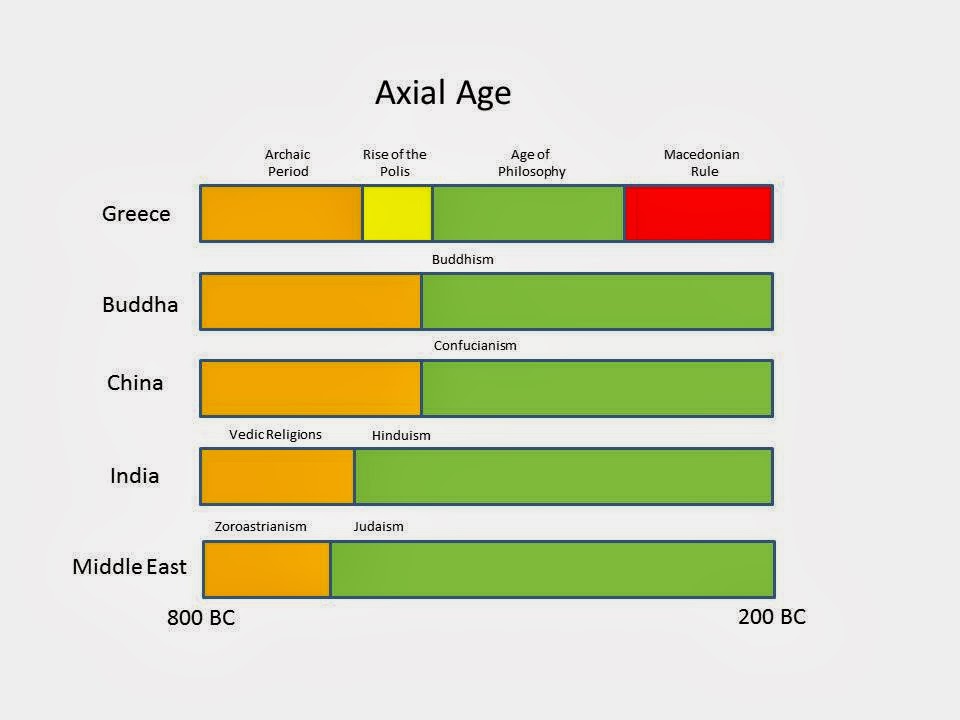Axis age
Back to History 8 India Manual questions
"The historian Karl Jaspers called the period of the Buddha’s lifetime, from the sixth to the fifth century BC, the Axis Age, because so many of the great thinkers in world history were alive at the same time: Buddha and Mahavira in India; Pythagoras and Heraclitus in Greece; the greatest of the Old Testament prophets, in particular ‘Deutero-Isaiah’; Confucius and Lao Tzu in China. This coincidence of lives suggests that the ancient world which had emerged from the first civilizations of Mesopotamia, Egypt, China, India, was undergoing a crisis of spirit, but also a crisis of opportunity" (CF Manual page 134). During this time, the world is searching for a moral conscience and spirituality. All these leaders are searching for a way for the world to become more moral.

Axis Age, also known as the Axial Age was the spiritual process which took place between 1000 and 100 B.C.E. Extraordinary events are crowded into this period. Confucius and Lao Tse live during this time, they both were well known philosophers in China; all the trends in Chinese philosophy arose. In India, it was the age of the Upanishads; the philosophies of skepticism, materialism, sophistry, and nihilism were all developed during this time. In Iran Zarathustra put forward his challenging conception of the struggle between good and evil. The idea that we should treat others as we would like them to treat us, known as the Golden Rule also came from the time known as the Axis Age. (http://www.newworldencyclopedia.org/entry/Axial_Age).

Christian Flowers